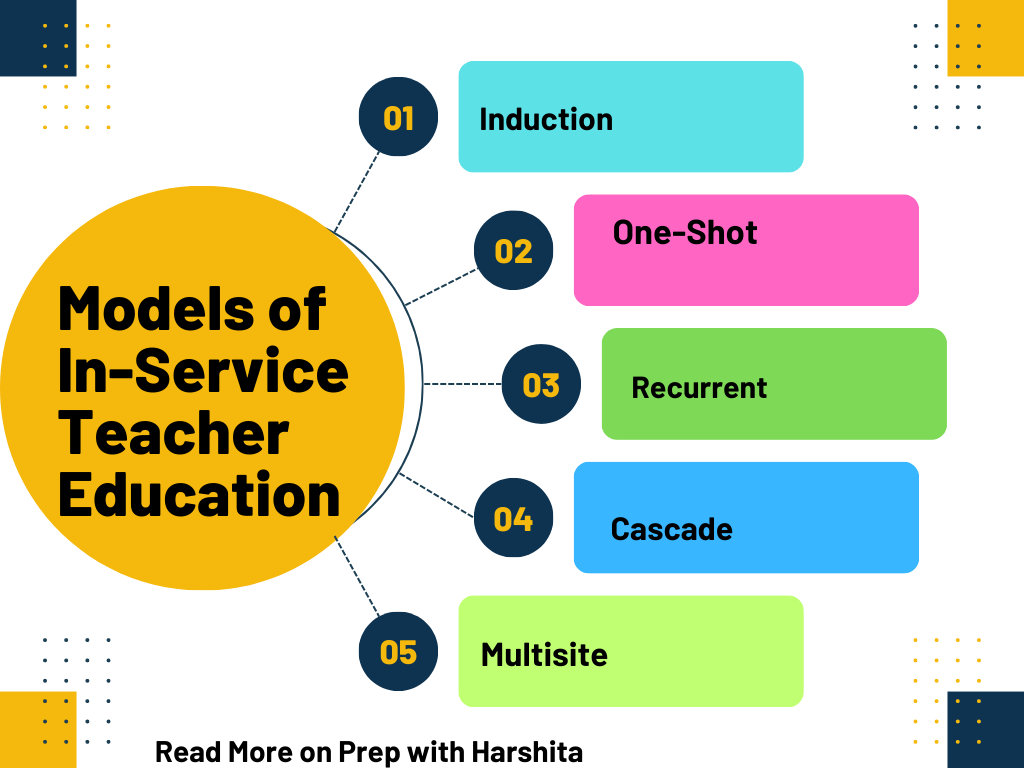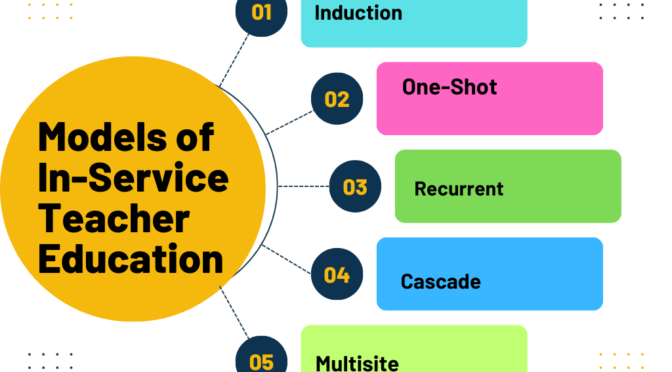In-service teacher training refers to professional development programs and activities designed for teachers who are already employed and actively teaching in schools. These programs aim to enhance teachers’ knowledge, skills, and instructional practices, keeping them updated with the latest research and pedagogical approaches.
There are several models of in-service teacher training that educational institutions and organizations employ. Here are a few common models:
- Induction: Induction programs are designed for newly hired teachers to help them transition smoothly into their teaching roles. These programs typically last for a specific period, such as one or two years, and provide support and mentorship to novice teachers. The focus is on familiarizing them with school policies, curriculum, instructional strategies, and classroom management techniques. Induction programs aim to build a strong foundation for new teachers and help them develop the necessary skills and confidence for effective teaching.
- One-shot: The one-shot model of in-service teacher training involves a single, isolated training session or workshop. It is usually a short-duration program that addresses a specific topic or skill. The training session may be conducted by an expert in the field or a resource person who specializes in the area being addressed. The one-shot model provides a targeted learning experience on a particular theme or strategy, but it may not allow for extensive follow-up or ongoing support.
- Recurrent: Recurrent in-service teacher training programs are characterized by regular and periodic training sessions conducted throughout the year. These programs aim to provide continuous professional development opportunities to teachers. The sessions can be conducted weekly, monthly, or at specific intervals, depending on the needs of the teachers and the organization. Recurrent training allows for more sustained and ongoing support, ensuring that teachers have the opportunity to deepen their knowledge and skills gradually.
- Cascade: Cascade training, also known as train-the-trainer model, involves training a group of educators who then become trainers themselves. The initial training is provided to a select group of teachers or educational leaders who possess expertise in a particular area. These trained individuals then disseminate the knowledge and skills to their colleagues or subordinates within the organization. Cascade training is effective for large-scale training initiatives, as it allows for the efficient distribution of knowledge across multiple levels within the educational system.
- Multisite: Multisite in-service teacher training involves collaborative efforts among multiple schools or educational institutions. This model brings together teachers from different locations or districts to participate in joint training programs. It promotes networking, sharing of best practices, and cross-pollination of ideas among educators from various contexts. Multisite training programs often involve workshops, conferences, or professional learning communities that enable teachers to connect and collaborate with peers from different schools.
- School-based: School-based in-service teacher training focuses on professional development activities conducted within the school or district. These programs are tailored to meet the specific needs and goals of the school community. School-based training can include various approaches, such as teacher-led workshops, lesson observations, collaborative planning sessions, peer coaching, or action research projects. The advantage of this model is that it aligns professional development with the specific context and priorities of the school, fostering a sense of ownership and relevance among teachers.
- Coursework: Coursework-based in-service teacher training involves enrolling in formal courses or academic programs offered by universities or educational institutes. These courses are often part-time or online, allowing teachers to continue their professional development while working. Coursework may cover a wide range of topics, including pedagogy, subject-specific content, assessment strategies, special education, or educational leadership. The coursework model provides a structured and systematic approach to professional development, offering theoretical knowledge and practical application opportunities.
It’s important to note that these models are not mutually exclusive and can be combined or adapted based on the specific needs and resources of an educational institution or organization. The choice of model depends on factors such as the goals of the training program, available resources, time constraints, and the preferences of the teachers and administrators involved.
Also Read: Modes of In-service Teacher Education

Also Visit: Prep with Harshita

